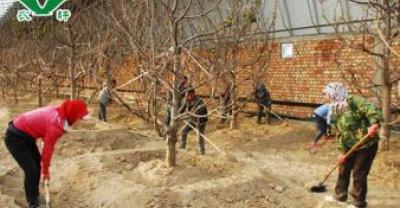The planting method of colored calla lilies: can colored calla lilies be cultivated for several years? Is the colored calla lily poisonous?
Colored calla lily (Zantedeschia aethiopica) is native to South Africa. Calla is a perennial herb of Araceae. The colored calla lilies cultivated as cut flowers are mainly red calla lilies and * calla lilies. The cultivation habits are fundamentally different from the common white calla lilies, and it is difficult to cultivate them. Under normal circumstances, colored calla lilies can be kept for 3-4 years.
I. selection and treatment of seeding balls
1. Selection of bulbs: the bulbs used for the production of cut flowers should be strong and disease-free, bright in color and full in bud eyes. The size of the bulb should be about 3-5 cm in diameter, and the bulb is too small to blossom or not.
2 variety selection: the varieties with strong disease resistance, bright flower color, insensitive to light, high cut flower yield and high percentage in the market should be selected.
3. Pre-planting treatment: the seed ball of colored calla can be treated with gibberellin to promote flowering. Increase the yield of cut flowers. Generally, before planting, the gibberellin solution with a concentration of 25 mg / kg is used to soak for 10 minutes and 15 minutes. The time is too long and the concentration is too high, which can easily cause abnormal flowers.
cultivation environment choice: colored calla lilies prefer warm, moist and shady environment and are not resistant to cold. The suitable temperature during the growing period is 15 ℃ / 24 ℃ in the daytime, and the night temperature is not lower than 12 ℃. The high temperature above 30 ℃ is easy to cause the prevalence of soft rot. The cultivation environment should be well ventilated and moderately shaded, and the cultivation land should choose sandy soil with higher topography, better drainage conditions, rich organic matter and pH value about 7, and apply nitrogen, phosphorus, potassium and a large number of mature organic fertilizers.
Second, planting bulbs
1. Planting time should be determined according to the needs of cut flowers and bulbs. However, the quality and yield of cut flowers of colored calla planted in spring are the highest, and for promoting and delayed cultivation, attention should be paid to the flowering treatment of bulbs and the effective control of cultivation environment in order to make a profit. Sprouting is carried out before sowing, and new buds are germinated before planting.
two。 Planting depth: generally 3 cm 4 cm bulb planting depth of 10 cm, for more than 5 cm bulb, the depth of 15 cm is appropriate. Watering enough water after planting and covering the ground with wheat straw to increase humidity and reduce soil temperature, promote seed bulb germination and rooting.
water and fertilizer management: the water management of colored calla is very important in the growing period, generally speaking, it should be wet at the initial stage of growth. The amount of water should be properly controlled in the later stage of flowering, and the bulb should be enriched and forced to dormancy in a dry environment after anthesis.
In the case of adequate basal fertilizer, can be treated with proper topdressing. Tongdang used 1000 times calcium nitrate and foliar fertilizer twice before flowering, with an interval of 7 days, in order to promote flowering, and compound fertilizer should be applied after flowering to promote seed bulb fullness and maturity.
Are colored calla lilies poisonous? Horseshoe lily itself is toxic, containing a large number of herbal calcium crystals and alkaloids, accidental eating will cause drowsiness and other toxic symptoms. This species is a poisonous plant listed in the Chinese plant atlas database, and its toxicity is that the inflorescences of tuber, spawn and fleshy spike are poisonous. Chewing a small tuber can cause swelling in the tongue and throat.
- Prev

How should Artemisia annua be planted?
How should Artemisia annua be planted? Despite the fact that chrysanthemum chrysanthemum is so common in our lives nowadays, it can only be enjoyed by emperors in ancient times.
- Next

Planting season and method of Platycodon grandiflorum: how to plant Platycodon grandiflorum and when to plant it? Points for attention in planting Platycodon grandiflorum
Under normal circumstances, the market purchase price of fresh Platycodon grandiflorum per kilogram of first-class goods is 2.6-6.0 yuan, and the purchase price of dry goods is 12 yuan per kilogram. At present, the city of Kikyo.
Related
- Fuxing push coffee new agricultural production and marketing class: lack of small-scale processing plants
- Jujube rice field leisure farm deep ploughing Yilan for five years to create a space for organic food and play
- Nongyu Farm-A trial of organic papaya for brave women with advanced technology
- Four points for attention in the prevention and control of diseases and insect pests of edible fungi
- How to add nutrient solution to Edible Fungi
- Is there any good way to control edible fungus mites?
- Open Inoculation Technology of Edible Fungi
- Is there any clever way to use fertilizer for edible fungus in winter?
- What agents are used to kill the pathogens of edible fungi in the mushroom shed?
- Rapid drying of Edible Fungi

